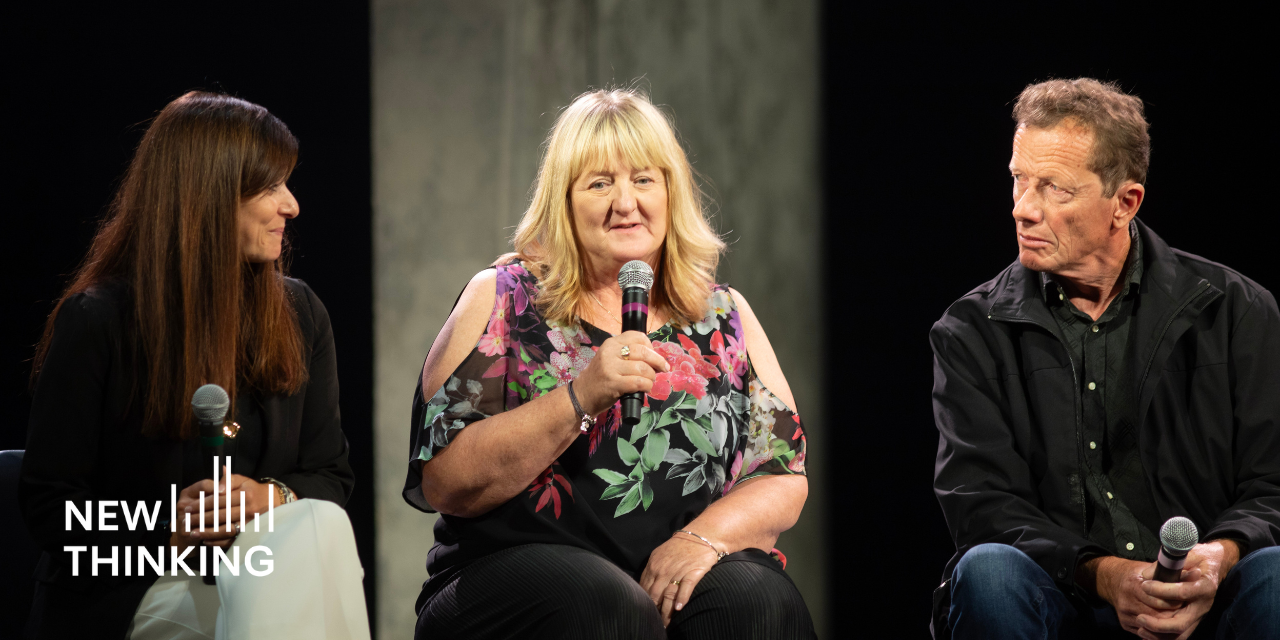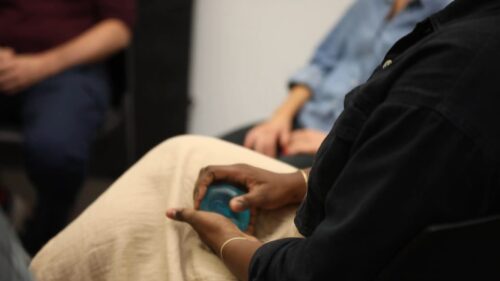Yvonne Smith Segars was a member of the founding team of the Essex County Drug Court, which opened in May 1997, and was sworn into office as the New Jersey Public Defender in 2002. Here she talks about the development of drug courts in New Jersey and about the defense bar’s attitudes towards problem-solving courts.
Yvonne Smith Segars, a defense attorney for 17 years, was sworn into office as the New Jersey Public Defender on September 25, 2002. Segars was a member of the founding team of the Essex County Drug Court, which opened in May 1997. Here she talks about the development of drug courts in New Jersey and about the defense bar’s attitudes towards problem-solving courts.
How did you become convinced of the value of this new approach?
I entered this field as a public defender with a traditional mindset—very adversarial—and so it took time for me to be convinced that this was something good for our clients. I became convinced, slowly, when I saw our clients graduating through drug courts, staying clean and not recidivating, and really getting their lives back, not just escaping a prison sentence. I saw that at the end of the day not only were they not in custody, but they were clean and sober and had decent housing, jobs, and access to health care. I saw that there was a complete realm of services that was being provided to the client.
As a public defender, what are/were your concerns about drug courts?
Initially the traditional role of the public defender seemed inconsistent with this team approach, and I had to square my thinking and my role with this new setting, which is very different from a typical courtroom. I had to resolve issues around topics such as privilege, conflict, and confidentiality, and I had concerns about equal access to drug courts. I wanted to ensure that the same people represented in prison were the same people we were getting into drug court, so that we weren’t “cherry-picking,” or being so selective that we were letting only the lowest risk people into drug courts. I wanted to make sure that we screened in and not out.
How do you resolve the conflicts between the traditional adversarial role of the defense attorney and the collaborative approach of drug court?
Through education and training. You train and cross-train people. The defense attorneys, prosecutors, and judges all need to know about substance abuse. Learning about substance abuse is critical to being a part of this kind of a model; if you don’t understand the recovery process, it’s very hard to be a full participant in the structure. Our primary role, collectively as a group, is to assist individuals in getting through and succeeding in the substance abuse program. We are all working toward that end, and if we understand that and we’re all on the same page, we increase the probability that the outcomes will be positive.
How much resistance did you face in implementing the drug court model in New Jersey?
What I’ve learned over the years is that we sometimes have to start with small beginnings. It is quite a challenge to convince some people that treatment works, that drug courts are not “soft on crime.” Drug courts are tough. It’s very hard for a lot of our clients to get through drug courts. Substance abuse treatment and recovery is very difficult.
The resistance comes from those who are not as educated about substance abuse. Once people are educated and they see for themselves that these types of models can be safe and successful, they slowly change their minds. And now we’re getting enough research out there to show us that the rate of recidivism is low, certainly lower than with those who go to prison and don’t get treatment. Drug courts can work.
What is the biggest challenge when a statewide drug court effort commences?
The biggest challenge will be to have sufficient resources and services available to support these courts. The success of drug courts has always been contingent upon the availability of programs and beds as well as community-based resources, such as housing and literacy programs, education and health care.
How do you ensure quality as New Jersey opens more and more drug courts?
You ensure quality by holding every party accountable. Are your participants being re-arrested? Are they clean and sober and still employed, three or five years out? Do they stay out of the criminal justice system? Those are some objective measures of success. But remember, success is very individualized. Even when a client doesn’t succeed or go all the way through a drug court program, that client may have stayed clean and sober for six months. This can be a success; for some people it may be the first time they’ve been clean and sober for 20 years.
In the beginning, our judge was the Honorable Katherine S. Hayden, who’s now a federal court judge in the U.S. District Court. We visited every treatment facility we were sending our clients to. We wanted to ensure the quality of services by knowing, first-hand, what kind of services our clients were getting. Cultural proficiency is critical; if you’re trying to deliver services to a particular individual, you must know about their cultural background—their ethnicity, religion, poverty level, language barriers, etc. If there’s a language barrier, you won’t be able to communicate good information. Women don’t always do well in certain treatment programs; if they’re surrounded by a group of men, it’s not likely that they’re going to share their innermost thoughts. So you want to be able to have a treatment community that is supportive of the cultural dynamic of the group that you serve.
What advice can you give to other defenders interested in developing or participating in drug courts?
Be at the table for all levels of planning. It is crucial that a defense attorney be involved in the planning and implementation at every stage. Of course, depending on where you are, it’s hard sometimes; in jurisdictions where the defense attorney is not invited in, they basically have to accept whatever formula and whatever structure is developed by others. Whenever that happens I think you’re at risk of having a drug court that isn’t going to be as successful. To exclude any stakeholder from the process increases the probability of failure.
Also, visit other drug courts and talk to other defenders who are in drug courts all over the country, and seek their guidance. Early on there weren’t a lot of us and we all networked successfully and talked to one another.
But I would like to stress that the role of the defense attorney to protect the client does not change. We still have to be concerned with issues such as due process, constitutional issues, equal protection, and advocating for our clients. We don’t give up that role simply because we’re part of a drug court team, so it is important for us to remain vigilant as representatives and advocates for our clients. Even if the model represents a non-adversarial, non-traditional approach, that doesn’t mean we don’t advocate just as zealously. We still have to make sure that the rights of our clients aren’t violated along the way.
That’s probably the most important piece to me, that we understand that we are still defense attorneys and we still have an ethical duty and obligation to protect our clients’ rights. And that we can do so in the context of a drug court model.
How do you see the future of drug courts and other problem-solving courts?
We’ve got them now statewide, but it’s taken nine years. My hope is that there will be drug courts in every county in the United States. Substance abuse treatment is something that we have to make available to everyone. Incarcerating people who have substance abuse problems is not, in my view, the best approach. Drug courts are an alternative approach to incarceration, and we know that substance abuse treatment will assist us in breaking that cycle of recidivism and abuse.
There is an expression in the treatment community: “Insanity is doing the same thing over and over again and expecting a different result.” The criminal justice system has done the same thing over and over again and expected a different result. Incarcerating people over and over again is not going to break the cycle of recidivism. What will break the cycle is doing things differently, to have a well-educated, diverse group of professionals who are culturally proficient and cross-trained to assist in the delivery of services to substance abuse clients.

